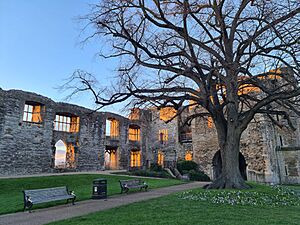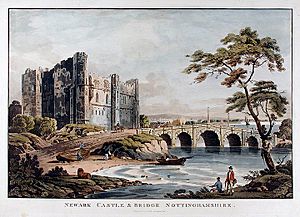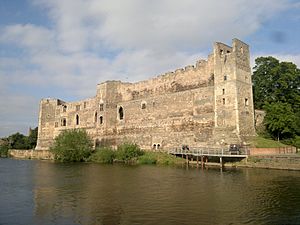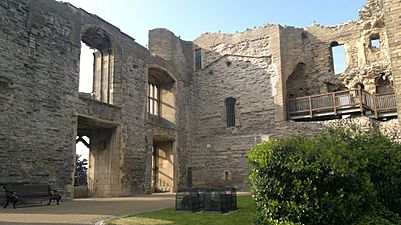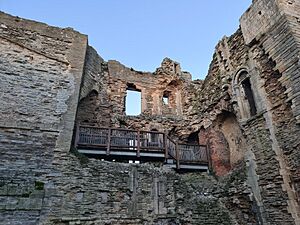Newark Castle, Nottinghamshire facts for kids
Quick facts for kids Newark Castle |
|
|---|---|
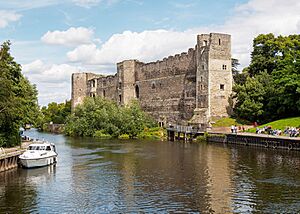 |
|
| Location | Newark on Trent |
| Built | 12th Century |
| Architect | Anthony Salvin |
| Architectural style(s) | |
|
Listed Building – Grade I
|
|
| Official name: Newark Castle | |
| Designated: | 29 September 1950 |
| Reference #: | 1196278 |
| Designated: | 28 November 1994 |
| Reference #: | 1001318 |
| Website | https://www.newark-sherwooddc.gov.uk/newarkcastle/ |
| Lua error in Module:Location_map at line 420: attempt to index field 'wikibase' (a nil value). | |
Newark Castle is a historic building in Newark-on-Trent, a town in Nottinghamshire, England. It was built in the mid-1100s by Alexander, who was the Bishop of Lincoln. At first, it was a wooden castle. Later, it was rebuilt using strong stone.
The castle was partly taken apart in the 1600s. This happened because of the English Civil War. In the 1800s, it was fixed up. An architect named Anthony Salvin worked on it in the 1840s. Later, the town of Newark bought the castle in 1889 and did more repairs.
Contents
The Castle's Early Days
In a document from around 1135, King Henry I gave permission. He allowed the Bishop of Lincoln to build a castle. The document said the Bishop could build a ditch and wall. This was for his fishpond in Newark. He could also change the path of the Fosseway road.
Bishop Alexander also set up a place to make coins at the castle. This first castle was probably made of wood. It was later rebuilt with stone.
King John's Last Days
King John died at Newark Castle. This happened on the night of October 18, 1216. People say he got sick after eating too many peaches. He died from a stomach illness called dysentery.
Later History and Restoration
The castle was "slighted" in 1648. This means parts of it were deliberately destroyed. It was left in ruins after that.
Between 1845 and 1848, the architect Anthony Salvin worked to restore the castle. In 1889, the town of Newark bought the building. They did even more restoration work.
Protecting the Castle Today
Newark Castle is now a scheduled monument. This means it's a very important historic building. It's protected from changes that aren't allowed. It's also a Grade I listed building. This shows it's a structure of international importance.
The Gilstrap Heritage Centre used to be on the castle grounds. It had exhibits about the castle and the town's history. Especially about the English Civil Wars. Now, the Gilstrap Centre is the Newark Registration Office. You can visit the castle gardens for free. A Castle Ranger also gives tours.
More to Explore
- Grade I listed buildings in Nottinghamshire
- Listed buildings in Newark-on-Trent
- Sconce and Devon Park


